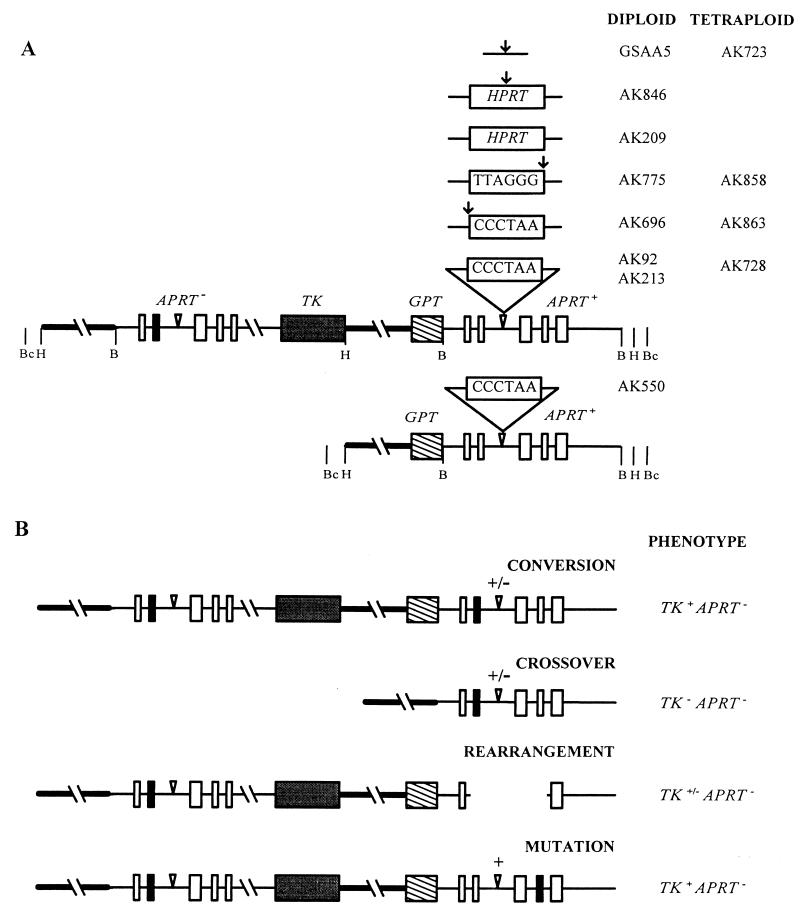FIG. 1.
Molecular structures of the substrates at the APRT locus in diploid and tetraploid cell lines and of the products isolated in various selections. (A) Inserted sequences are shown above their common site in the second intron of the downstream, functional APRT gene (the five exons of APRT are shown as boxes). Vertical arrows indicate locations of the I-SceI recognition sites. Inverted triangles indicate the positions of the FRT recognition sequences. The upstream copy of APRT is nonfunctional by virtue of a truncated fifth exon and a mutation in exon 2 (filled box). The upstream and downstream copies share 6.8 kb of homology: 4.5 kb upstream of the APRT gene (thick line) and 2.3 kb of homology within the gene itself. Cleavage sites for the restriction enzymes BamHI (B), HindIII (H), and BclI (Bc) that were used in Southern analyses are indicated. An additional BamHI site in AK775 and AK858 is located in the polylinker adjacent to the TA end of the telomere sequence (not shown). The hybridization probe corresponds to the downstream BamHI fragment that encompasses the APRT gene, but included no inserted sequences. (B) Products were distinguished based on Southern patterns after BamHI and HindIII cleavage and PCR analysis (63–65). Conversions have a structure like the parental tandem duplication, except that some lose the insert as part of the conversion process (status of the insert is indicated by +/−). Conversions were shown to contain the EcoRV mutation in exon 2 (filled box) by PCR amplification across the exon (Fig. 4A) followed by incubation with EcoRV. Crossovers have a single copy of the APRT gene whose size depends on whether the insert was retained or lost. Rearrangements yield a Southern pattern that does not correspond to conversions or crossovers (Fig. 3); they were subjected to further Southern and PCR analyses (Fig. 4A). Mutations were identical to conversions by Southern analysis but were shown not to contain the EcoRV mutation by PCR analysis. They are assumed to carry point mutations or small deletions elsewhere in the APRT gene; however, they have not been further characterized.

